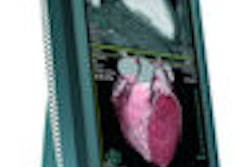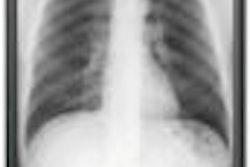CHARLOTTE, NC - PACS administrators who work in imaging centers don't have the same level of financial resources or staff as their hospital counterparts. But by networking with those who can provide information and/or professional support, including counterparts at competitive healthcare facilities, the job of managing imaging informatics activities can become more successful and less stressful.
Knowledge is a critically important resource, according to informatics professionals who offered advice to their peers at the Society for Imaging Informatics in Medicine (SIIM) annual meeting. Acknowledging that imaging centers exist in a wide range of sizes, financial budgets, number of IT staff, and operational complexity, they all share the same bond of needing to be creative with lean resources to be competitive.
It's more advantageous for PACS administrators in imaging centers to benefit from the knowledge and experience of others, said Victoria Myers, IS PACS project manager at Scottsdale Healthcare, a three-hospital network in Arizona that also includes freestanding imaging centers.
Several years ago, she started a local users group of PACS administrators working in the greater Phoenix-Scottsdale metropolitan area, and the group has since expanded its membership to any PACS administrators in the state. In Myers' opinion, imaging center PACS and IT staff get the most benefit from this group.
"Benefit from somebody else's experience in the school of hard knocks," she counseled. "Identify where your knowledge weaknesses are and find a way to obtain the information you need." One of the best sources of information to assess this is the study syllabus prepared for certification as an imaging informatics professional, according to Myers.
Understanding the challenges of implementation and advance analysis of growth and expansion is imperative before undertaking any imaging informatics-related project, Arne Meis, assistant director of IT at Jefferson Radiology in East Hartford, CT, told SIIM attendees. Jefferson Radiology epitomizes the large, complex private radiology practice; it operates eight imaging centers in central Connecticut and its radiologists provide services to four area hospitals, including 800-bed Hartford Hospital.
Sixteen professionals support IT operations at Jefferson Radiology, which generates 850,000 exams by 350 full-time equivalent technologists, which are read by 46 radiologists who provide reports to 3,000 referring physicians. Jefferson Radiology is the largest practice in central Connecticut, but the environment is competitive and budgets and staff time are lean.
"Buy what -- with limited resources? Train who -- with our IT staff working at capacity? Any new request is a challenge, in spite of our size," Meis said. "Imaging centers face the challenges of fewer financial resources and less time to do strategic planning. We don't have the purchasing power to leverage against vendors that hospitals do, and our staff may not have the breadth of knowledge of specific IT systems."
But there are advantages that imaging center IT staff have over their hospital counterparts, Meis pointed out. They are more focused because their objective is to provide IT services exclusively to support radiology-related operations, and hardware is dedicated for this purpose. Decisions are strategically focused and tend to be implemented rapidly when approved. Direct access by IT staff to their customers -- the radiologists -- enhances efficiency.
"Our radiologists know that investing in IT infrastructure is as important as investing in a modality," Meis said. "They understand that it ensures quality and regulatory compliance, improves customer satisfaction, increases efficiency and patient volume as a result of optimized workflow, and, if done right, improves revenue and the bottom line."
IT operations at Jefferson Radiology succeed through the standardization of equipment and services. Even so, the IT staff has more than 100 software applications to support. PACS was installed practice-wide in 2004, and IT operations are now consolidated in a secure data center, protected by state-of-the-art technology security including biometric identification. This investment was expensive and not part of the strategic budget for PACS; however, once the practice realized that it was mission-critical, the radiologists approved it, Meis explained.
If a radiology practice with one or more imaging centers has a highly skilled IT staff, utilizing open-source tools stretches limited resources, Dr. James Whitfill, chief information officer (CIO) of Scottsdale Medical Imaging, recommended. Like Jefferson Radiology, Scottsdale Medical Imaging's IT team is lean, and it stretches its resources to support a physician-owned practice with 45 subspecialty-trained radiologists reading for 10 imaging centers and three hospitals over an area of 200 square miles.
Noting that lack of support for open-source software makes CIOs nervous, he recommended that more than one IT person be responsible for its use, user training, and technical support. Whitfill said that his organization uses 10 open-source tools, including instant messaging, a robust spam filter, a DICOM router, server monitors, and intrusion-detection monitoring.
When imaging centers are considering whether to adopt open-source tools, they need to determine if the support required will cost more in time and imaging IT staff resources than purchasing a commercial version with vendor support. It's an individual decision, Whitfill emphasized, but if an imaging center can support the use of open-source tools, their implementation can really stretch a budget.
By Cynthia E. Keen
AuntMinnie.com staff writer
June 9, 2009
Related Reading
PACS administrators shouldn't neglect training, June 5, 2009
Making PACS work in small imaging centers, May 16, 2008
SIIM launches education program for IIPs, January 8, 2008
PACS administrator certification: CIIP or PARCA? September 20, 2007
Copyright © 2009 AuntMinnie.com



















